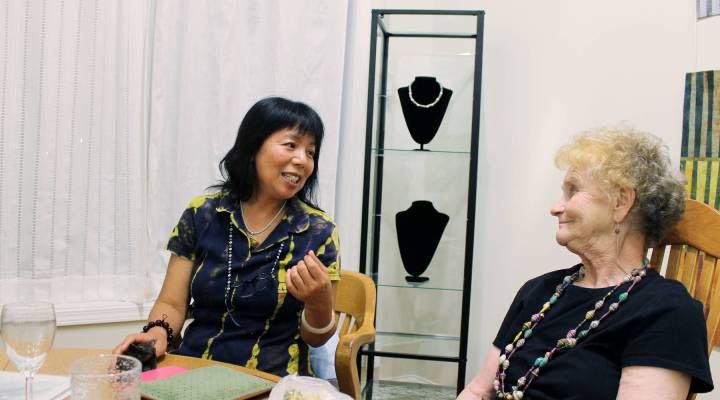
What median income can buy depends on where you live
What median income can buy depends on where you live

Each year, around the time that the U.S. Census Bureau releases median income data, we are treated to slideshow lists of cities where your dollar stretches furthest. They’re often smaller, southern cities like Paducah, Ky., where families making the national median income of about $50,000 a year can live well. John Hasagawa, a professor at Paducah School of Art and Design and his wife, Lily Liu, who works part-time at Bryerpatch Studio, a fine-art quilt gallery, earn just about the national median. They rent a pretty, brick home in the arts district of Paducah for a thousand dollars a month. Hasagawa’s job offers health insurance and a 403(b) retirement plan. And while daycare for their younger son eats up $500 a month, they still had enough money left over to travel to China, where Liu is originally from, for several weeks this summer.
“I think we’re better than middle class,” Liu said. “We may not have lots of money saved in the bank, but our kids are happy. We’re able to travel. We have a car. We have everything I can dream of.”
Income Upshot:
How people at different incomes live, work and play. A new data interactive from Marketplace’s Wealth & Poverty Desk. Try the interactive.
Living in an inexpensive place, however, has a catch. Each town and city across the United States has its own median income. In Paducah, it’s only about $30,000 a year.
“Incomes vary significantly throughout the United States,” said Gordon Green, a partner at Sentier Research, a data consulting firm that specializes in income statistics. “If you want to understand how people are doing in a particular area, you need to compare their income against the median income for the area.”
Blaine Hebert, a sexton at Grace Episcopal Church, and his wife Erin, who works part-time in art galleries, are making the Paducah median income – and they’re living paycheck-to-paycheck.
The young couple frequently expresses their gratitude for what they have, but they’re struggling. They own a home thanks to a program that assists with downpayments if recipients commit to stay in the neighborhood for a set period of time. They rely on WIC, food assistance, for their year-old daughter. And while Blaine’s job offers health insurance to him and the baby, Erin can’t afford it. She was diagnosed with a benign brain tumor in college and would need to fork over around $600 a month for coverage.
“It’s a little tumor,” Erin said. “But it’s been a big challenge to pay for insurance.”
When they learn that they’re statistically middle-middle class for Paducah, the Heberts sound unsettled.
“It just doesn’t feel like middle class,” said Blaine Hebert.
“It doesn’t give me much to dream for,” said Erin. “I keep wanting to pull us up even more. And if we’re already in the middle, I don’t know what’s above this.”
Field production for this story was provided by independent radio producer, Rebecca Feldhaus Adams.
Income Upshot:
How people at different incomes live, work and play. A new data interactive from Marketplace’s Wealth & Poverty Desk. Try the interactive
There’s a lot happening in the world. Through it all, Marketplace is here for you.
You rely on Marketplace to break down the world’s events and tell you how it affects you in a fact-based, approachable way. We rely on your financial support to keep making that possible.
Your donation today powers the independent journalism that you rely on. For just $5/month, you can help sustain Marketplace so we can keep reporting on the things that matter to you.













